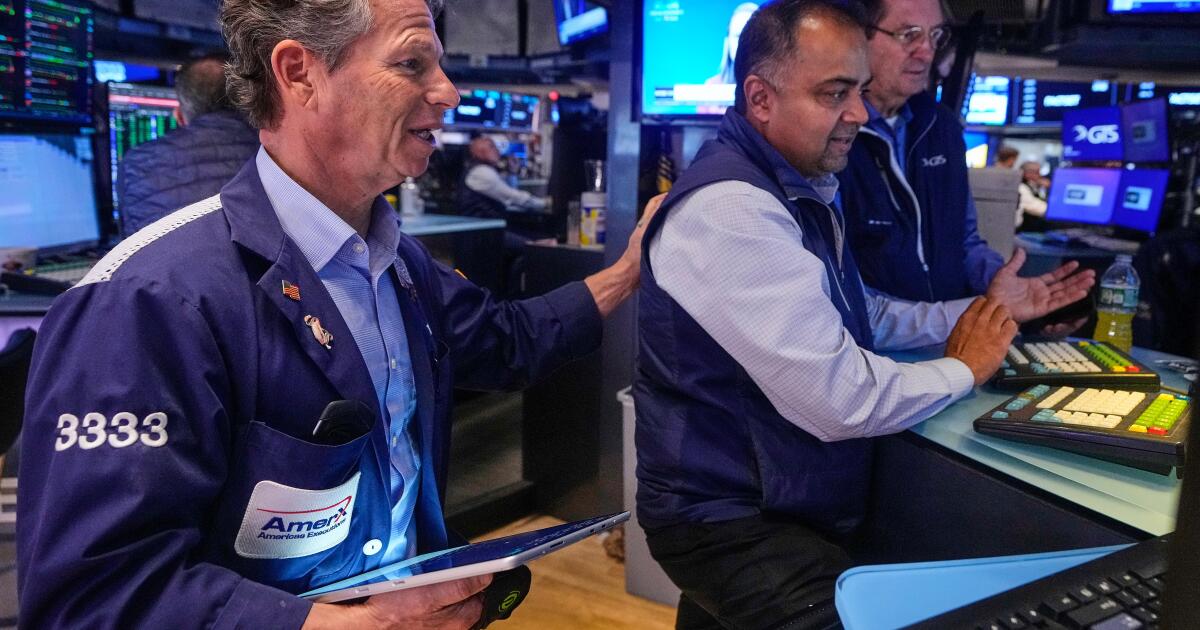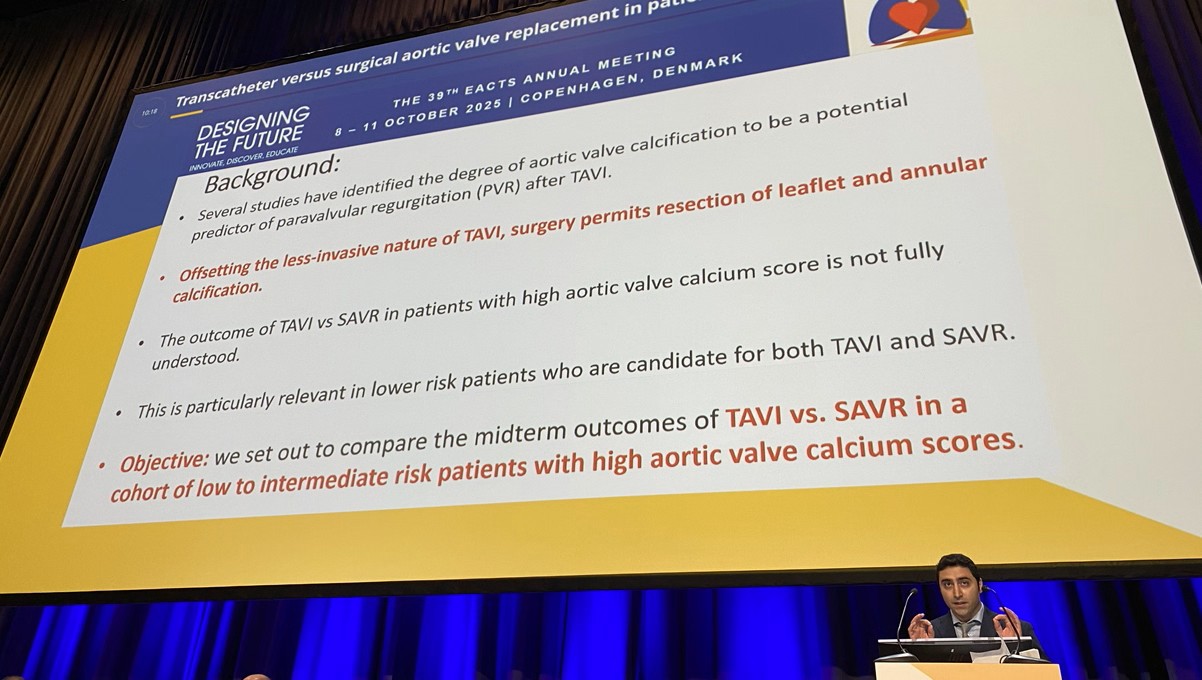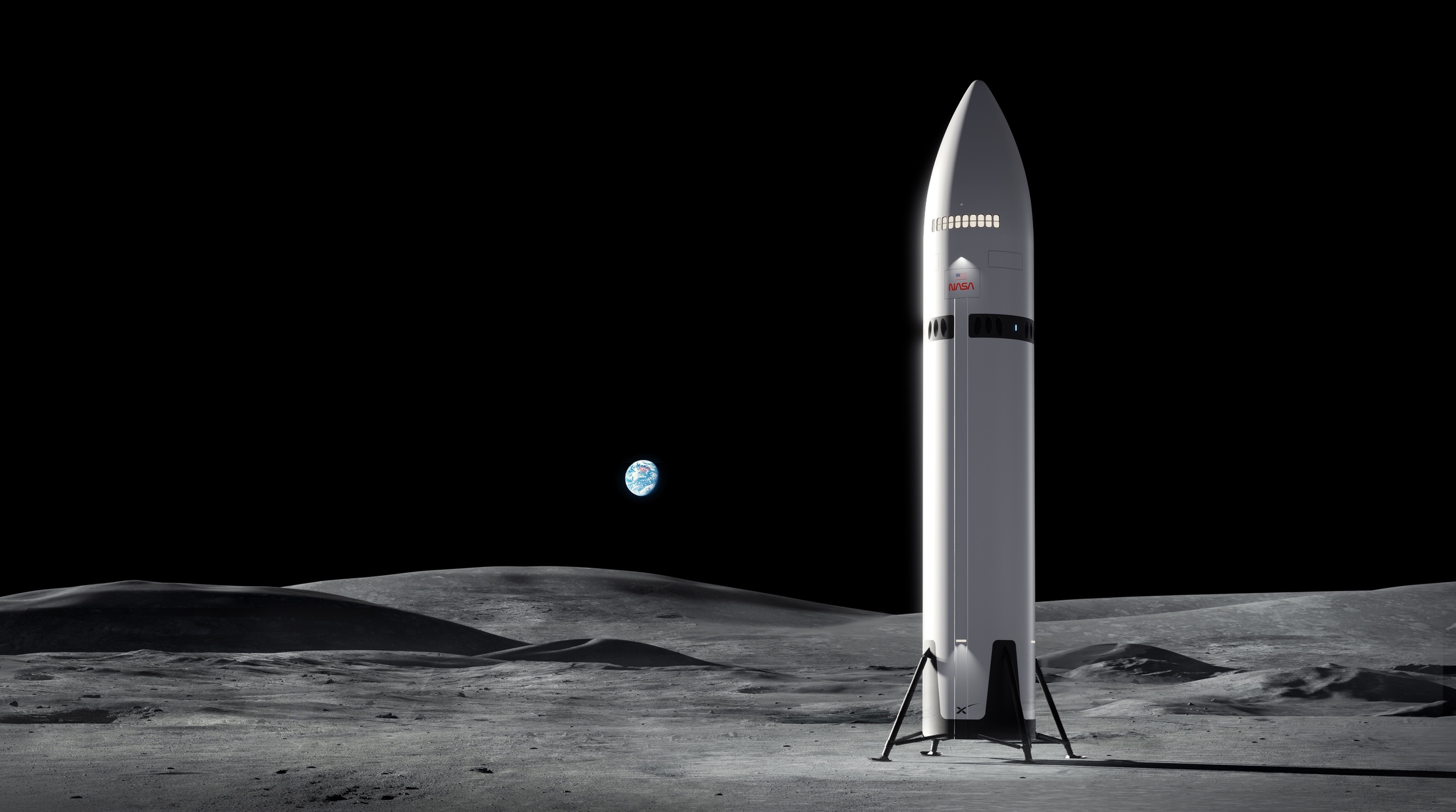West Ham fans picked the right night to stage a boycott as their side slumped to a dispiriting 2-0 defeat at home to Brentford.
Goals from Igor Thiago and Mathias Jensen were enough to secure a…

West Ham fans picked the right night to stage a boycott as their side slumped to a dispiriting 2-0 defeat at home to Brentford.
Goals from Igor Thiago and Mathias Jensen were enough to secure a…

Stocks rallied on Monday to the cusp of their records.
The Standard & Poor’s 500 climbed 1.1% and pulled within 0.3% of its all-time high set this month. The Dow Jones Industrial Average jumped 515 points, or 1.1%, and the Nasdaq composite gained 1.4%.
Apple led the way and rose 3.9% amid optimism about demand for its latest iPhone design. It was the strongest force lifting the S&P 500 and set its own record high.
Cleveland-Cliffs jumped 21.5% after the steel company’s chief executive, Lourenco Goncalves, said it would provide details soon about a potential deal with a major global steel producer that could mean bigger profits. He also said his company has potentially found signs of rare earths at sites in Michigan and Minnesota.
Such materials have grabbed the global spotlight after China recently put curbs on the export of its own rare earths, a move that President Trump characterized as hostile. Trump’s ensuing threat of higher tariffs triggered big swings for Wall Street, but the concerns eased a bit after he said such high tax rates on Chinese imports are unsustainable.
Another source of worry for Wall Street, from the banking industry, also appears to be easing. Stocks of smaller and midsize banks climbed Monday, recovering some of their losses after a couple raised alarm bells last week by warning about potentially bad loans they’ve made.
Zions Bancorp. gained 4.7% Monday after its 5.1% drop last week, when it said it had found “apparent misrepresentations and contractual defaults” related to a couple of borrowers.
Amazon’s stock held up despite a widespread outage of its cloud computing service that caused disruption for internet users around the world Monday. Amazon’s stock rose 1.6%.
All told, the S&P 500 added 71.12 points to 6,735.13. The Dow Jones Industrial Average climbed 515.97 to 46,706.58, and the Nasdaq composite gained 310.57 to 22,990.54.
This week features a raft of big names reporting their latest quarterly results, including Coca-Cola on Tuesday, Tesla on Wednesday and Procter & Gamble on Friday.
The pressure is on companies broadly to show that their profits are growing after a torrid run of 35% for the S&P 500 from a low in April. Delivering bigger profits is one of the easiest ways for companies to quiet criticism that stock prices have gone too high. The other is for stock prices to fall.
Corporate profit reports have also taken on more importance because they offer windows into the strength of the U.S. economy when the federal government’s shutdown has delayed important economic updates.
That’s making the job of the Federal Reserve more difficult, as it tries to decide whether high inflation or the slowing job market is the bigger issue for the economy. Fed officials have indicated they’re likely to cut rates several more times in order to give the economy a boost. But that could be a mistake if inflation worsens, because low interest rates can push it even higher.
On Friday, the U.S. government will issue an update for inflation during September. The report was supposed to arrive earlier in month, and the Social Security Administration needs the numbers to calculate cost-of-living adjustments for beneficiaries. But the government also said, “No other releases will be rescheduled or produced until the resumption of regular government services.”
In the bond market, Treasury yields held relatively steady. The yield on the 10-year Treasury eased to 3.98% from 4.02% late Friday.
In stock markets abroad, indexes rose across much of Europe and Asia.
Japan’s Nikkei 225 jumped 3.4%, after its governing Liberal Democrats found a new coalition partner, securing support for its leader Sanae Takaichi to become the country’s prime minister. Investors expect Takaichi, who would also be Japan’s first female prime minister, to push for low interest rates, higher government spending and other policies that could help the market.
Indexes rose 2.4% in Hong Kong and 0.6% in Shanghai after China reported its economy grew at a 4.8% annual pace in the last quarter, supported by relatively strong exports as companies increased shipments to markets other than the U.S.
Still, it was the slowest pace in a year. The world’s second-largest economy is still struggling to emerge from a prolonged downturn in its property market and to encourage consumers and businesses to spend more.
Choe writes for the Associated Press.

Bictegravir belongs to a class of anti-HIV drugs called integrase inhibitors. It is co-formulated into one pill called Biktarvy, which contains the following medicines:
In clinical trials,…

If you typically don’t consider oropharyngeal cancer as a potential risk among your patients living with HIV, results from a new meta-analysis suggest it’s time for a rethink. Incidence of this HPV-associated cancer was unexpectedly high in…
This request seems a bit unusual, so we need to confirm that you’re human. Please press and hold the button until it turns completely green. Thank you for your cooperation!

COPENHAGEN, Denmark—Among patients with severe aortic stenosis at low- or intermediate-risk for surgery who also have very calcified aortic valves, SAVR is associated with lower risks of all-cause mortality, paravalvular regurgitation, and heart failure hospitalization compared with TAVI, according to new single-center data.
“[A] calcium score could potentially be an important criteria to consider when deciding between TAVI versus SAVR in low- and intermediate-risk patients,” said Fadi Hage, MD (Lankenau Medical Center, Wynnewood, PA), who presented the findings at the 2025 European Association for Cardio-Thoracic Surgery meeting. “Further investigation into predictors of outcomes in lower-risk patients is warranted to improve patient selection and [make] a more informed heart team discussion.”
Session moderator Alicja Zientara, MD (Universitätsklinikum Freiburg, Germany), said the results highlight the need for imaging in assessing patients for TAVI.
“It’s not only about the clinical risk factors of patients and choosing the right valve, but very much about imaging and evaluating if a TAVR is very well feasible for a patient,” she told TCTMD. “We know that there is a risk of aortic regurgitation and there is a risk of pacemaker, and not every patient necessarily is the right one for this kind of treatment. So, we as surgeons have to work very much on implementing regular imaging in our daily practice to also evaluate the valve, like cardiologists do.”
Better Outcomes With SAVR
The analysis included 227 patients who underwent TAVI (mean age 82 years; 77% male) and 99 who had SAVR (mean age 68 years; 88% male) at their institution between June 2021 and December 2023. All patients were considered low-to-intermediate risk for surgery and had a high aortic valve calcium score (≥ 3,000 Agatston units). More patients in the TAVI arm had peripheral vascular disease (20% vs 6%) and fewer had bicuspid aortic valve anatomy (4% vs 39%) than in the surgery arm.
In a propensity score-matched analysis, survival at 2 years was higher in the SAVR arm compared with TAVI (HR 0.17; P = 0.001). The same relationship was seen for freedom from paravalvular regurgitation (HR 0.05; P = 0.001) and heart failure rehospitalization (HR 0.33; P = 0.045). Unadjusted analyses showed advantages for SAVR over TAVI with regard to survival and freedom from paravalvular regurgitation, but not freedom from heart failure rehospitalization.
There was a higher risk of new permanent pacemaker with TAVI compared with SAVR at 30 days (16% vs 6%; P = 0.01), but a lower rate of postoperative transfusion (7% vs 36%; P < 0.001).
During the discussion, session panelist Ferdinand Vogt, MD (Paracelsus Medical University Nürnberg, Germany), pointed out a challenge for surgeons. “In the real world, we don’t have for every surgical patient an Agatston score,” he said, questioning whether this creates a “bias” in real-world practice when patients are deciding between TAVI and surgery.
“It would be an important thing to consider,” Hage responded, adding that it’s not “very difficult to get” this information.
In an informal poll of the audience, about one-third in the room raised their hands indicating that they do send patients for calcium score imaging before the procedure.
Zientara said she was “a little” surprised by how few of the attendees use this kind of imaging in their workups. “But on the other hand, it’s always a hot topic,” she added. “We have new guidelines for the treatment of those patients where there are different opinions.”
Panelist Gregory Fontana, MD (Cardiovascular Institute of Los Robles Health System, Thousand Oaks, CA), commented that CT scans prior to SAVR have “become the gold standard” at his institution.
Hage, too, said he calculates his own CT measurements for each patient, enabling him to be “nonbiased.” As surgeons, he added, “we should select the right procedure for the right patients.”

WASHINGTON — NASA’s acting administrator says he plans to “open up the contract” SpaceX holds to land astronauts on the moon for the Artemis 3 mission because the company has fallen behind schedule.
In appearances on CNBC and Fox News on Oct. 20, NASA Acting Administrator Sean Duffy said NASA would allow other companies to compete to land astronauts on the moon for Artemis 3, a mission currently assigned to SpaceX’s Starship under a Human Landing System (HLS) contract awarded in 2021.
“SpaceX had the contract for Artemis 3,” Duffy said on CNBC. “The problem is they’re behind. They push their timelines out, and we’re in a race against China. The president and I want to get to the moon in this president’s term.”
“So, I’m going to open up the contract,” he continued. “I’m going to let other space companies compete with SpaceX, like Blue Origin, and again, whatever one can get us there first, to the moon, we’re going to take.”
Duffy made similar remarks on Fox News. “SpaceX has the contract. SpaceX is an amazing company. They do remarkable things, but they’re behind schedule,” he said. “So, I’m in the process of opening that contract up.”
“We’re going to have a space race in regard to American companies competing to see who can actually get us back to the moon first,” he said.
Duffy did not explain how such a “space race” would work or how it would be funded. Asked for further details, Bethany Stevens, NASA’s press secretary, provided only transcripts of Duffy’s television appearances. Most of NASA’s public affairs staff are currently furloughed because of the government shutdown that began Oct. 1.
The comments are the first public acknowledgment by NASA’s acting leader that development of the HLS version of Starship is behind schedule. Duffy previously maintained that Artemis 3 would launch in 2027, the agency’s official target, even as multiple Starship test flight failures earlier this year made that timeline increasingly unlikely.
In late July, Duffy told social media influencers attending the Crew-11 launch that SpaceX executives, including company president Gwynne Shotwell, assured him Starship would be ready for Artemis 3. “They feel very comfortable on Starship. They feel like they’re on pace for the lander,” he said then. “They said if there’s a holdup for Artemis 3, it’s not going to be them.”
After former NASA Administrator Jim Bridenstine told a Senate committee in September it was unlikely the United States would return humans to the moon before China’s first crewed landing, Duffy pushed back. “We are going to beat the Chinese to the moon. We are going to make sure that we do this safely. We’re going to do it fast. We’re going to do it right,” he said in an internal NASA town hall, without suggesting a change in approach for Artemis 3.
In his Oct. 20 interviews, Duffy acknowledged that Artemis 3 likely would not launch in 2027. On CNBC, after discussing Artemis 2’s planned launch as soon as next February, he said that “Artemis 3 comes a couple years after that.”
One of the competitors Duffy mentioned was Blue Origin, which has a separate HLS award to develop its Blue Moon Mark 2 lander for missions beginning with Artemis 5. The company reportedly has studied ways to adapt its smaller Blue Moon Mark 1 lander for a crewed mission, although one industry source described those concepts as “jury-rigged” and noted that Mark 1 currently cannot lift off from the lunar surface with any useful payload.
Other companies are also examining lunar lander concepts. “Throughout this year, Lockheed Martin has been performing significant technical and programmatic analysis for human lunar landers that would provide options to NASA for a safe solution to return humans to the moon as quickly as possible,” Bob Behnken, vice president of exploration and technology strategy at Lockheed Martin Space, said in a statement.
“We have been working with a cross-industry team of companies, and together we are looking forward to addressing Secretary Duffy’s request to meet our country’s lunar objectives,” he said, without providing details about the Lockheed lander concept.
SpaceX Chief Executive Elon Musk appeared unconcerned about potential competition. “They won’t,” he said in a social media post responding to a comment that it was “silly” to think another company would have a lander ready before Starship. “SpaceX is moving like lightning compared to the rest of the space industry.”
“Moreover, Starship will end up doing the whole moon mission. Mark my words,” he added.

A large chunk of suspected space debris has been found in a remote part of the Australian desert, the country’s space agency confirmed Monday.
The charred and smoldering object was found in the Pilbara region of Western Australia, according to…
Commercial shipping accounts for 3 percent of all greenhouse gas emissions globally. As the sector sets climate goals and chases a carbon-free future, nuclear power — long used as a source for military vessels — presents an enticing solution. To date, however, there has been no clear, unified public document available to guide design safety for certain components of civilian nuclear ships. A new “Nuclear Ship Safety Handbook” by the MIT Maritime Consortium aims to change that and set the standard for safe maritime nuclear propulsion.
“This handbook is a critical tool in efforts to support the adoption of nuclear in the maritime industry,” explains Themis Sapsis, the William I. Koch Professor of Mechanical Engineering at MIT, director of the MIT Center for Ocean Engineering, and co-director of the MIT Maritime Consortium. “The goal is to provide a strong basis for initial safety on key areas that require nuclear and maritime regulatory research and development in the coming years to prepare for nuclear propulsion in the maritime industry.”
Using research data and standards, combined with operational experiences during civilian maritime nuclear operations, the handbook provides unique insights into potential issues and resolutions in the design efficacy of maritime nuclear operations, a topic of growing importance on the national and international stage.
“Right now, the nuclear-maritime policies that exist are outdated and often tied only to specific technologies, like pressurized water reactors,” says Jose Izurieta, a graduate student in the Department of Mechanical Engineering (MechE) Naval Construction and Engineering (2N) Program, and one of the handbook authors. “With the recent U.K.-U.S. Technology Prosperity Deal now including civil maritime nuclear applications, I hope the handbook can serve as a foundation for creating a clear, modern regulatory framework for nuclear-powered commercial ships.”
The recent memorandum of understanding signed by the U.S. and U.K calls for the exploration of “novel applications of advanced nuclear energy, including civil maritime applications,” and for the parties to play “a leading role informing the establishment of international standards, potential establishment of a maritime shipping corridor between the Participants’ territories, and strengthening energy resilience for the Participants’ defense facilities.”
“The U.S.-U.K. nuclear shipping corridor offers a great opportunity to collaborate with legislators on establishing the critical framework that will enable the United States to invest on nuclear-powered merchant vessels — an achievement that will reestablish America in the shipbuilding space,” says Fotini Christia, the Ford International Professor of the Social Sciences, director of the Institute for Data, Systems, and Society (IDSS), director of the MIT Sociotechnical Systems Research Center, and co-director of the MIT Maritime Consortium.
“With over 30 nations now building or planning their first reactors, nuclear energy’s global acceptance is unprecedented — and that momentum is key to aligning safety rules across borders for nuclear-powered ships and the respective ports,” says Koroush Shirvan, the Atlantic Richfield Career Development Professor in Energy Studies at MIT and director of the Reactor Technology Course for Utility Executives.
The handbook, which is divided into chapters in areas involving the overlapping nuclear and maritime safety design decisions that will be encountered by engineers, is careful to balance technical and practical guidance with policy considerations.
Commander Christopher MacLean, MIT associate professor of the practice in mechanical engineering, naval construction, and engineering, says the handbook will significantly benefit the entire maritime community, specifically naval architects and marine engineers, by providing standardized guidelines for design and operation specific to nuclear powered commercial vessels.
“This will assist in enhancing safety protocols, improve risk assessments, and ensure consistent compliance with international regulations,” MacLean says. “This will also help foster collaboration amongst engineers and regulators. Overall, this will further strengthen the reliability, sustainability, and public trust in nuclear-powered maritime systems.”
Anthony Valiaveedu, the handbook’s lead author, and co-author Nat Edmonds, are both students in the MIT Master’s Program in Technology and Policy (TPP) within the IDSS. The pair are also co-authors of a paper published in Science Policy Review earlier this year that offered structured advice on the development of nuclear regulatory policies.
“It is important for safety and technology to go hand-in-hand,” Valiaveedu explains. “What we have done is provide a risk-informed process to begin these discussions for engineers and policymakers.”
“Ultimately, I hope this framework can be used to build strong bilateral agreements between nations that will allow nuclear propulsion to thrive,” says fellow co-author Izurieta.
Impact on industry
“Maritime designers needed a source of information to improve their ability to understand and design the reactor primary components, and development of the ‘Nuclear Ship Safety Handbook’ was a good step to bridge this knowledge gap,” says Christopher J. Wiernicki, American Bureau of Shipping (ABS) chair and CEO. “For this reason, it is an important document for the industry.”
The ABS, which is the American classification society for the maritime industry, develops criteria and provides safety certification for all ocean-going vessels. ABS is among the founding members of the MIT Maritime Consortium. Capital Clean Energy Carriers Corp., HD Korea Shipbuilding and Offshore Engineering, and Delos Navigation Ltd. are also consortium founding members. Innovation members are Foresight-Group, Navios Maritime Partners L.P., Singapore Maritime Institute, and Dorian LPG.
“As we consider a net-zero framework for the shipping industry, nuclear propulsion represents a potential solution. Careful investigation remains the priority, with safety and regulatory standards at the forefront,” says Jerry Kalogiratos, CEO of Capital Clean Energy Carriers Corp. “As first movers, we are exploring all options. This handbook lays the technical foundation for the development of nuclear-powered commercial vessels.”
Sangmin Park, senior vice president at HD Korea Shipbuilding and Offshore Engineering, says “The ‘Nuclear Ship Safety Handbook’ marks a groundbreaking milestone that bridges shipbuilding excellence and nuclear safety. It drives global collaboration between industry and academia, and paves the way for the safe advancement of the nuclear maritime era.”
Maritime at MIT
MIT has been a leading center of ship research and design for over a century, with work at the Institute today representing significant advancements in fluid mechanics and hydrodynamics, acoustics, offshore mechanics, marine robotics and sensors, and ocean sensing and forecasting. Maritime Consortium projects, including the handbook, reflect national priorities aimed at revitalizing the U.S. shipbuilding and commercial maritime industries.
The MIT Maritime Consortium, which launched in 2024, brings together MIT and maritime industry leaders to explore data-powered strategies to reduce harmful emissions, optimize vessel operations, and support economic priorities.
“One of our most important efforts is the development of technologies, policies, and regulations to make nuclear propulsion for commercial ships a reality,” says Sapsis. “Over the last year, we have put together an interdisciplinary team with faculty and students from across the Institute. One of the outcomes of this effort is this very detailed document providing detailed guidance on how such effort should be implemented safely.”
Handbook contributors come from multiple disciplines and MIT departments, labs, and research centers, including the Center for Ocean Engineering, IDSS, MechE’s Course 2N Program, the MIT Technology and Policy Program, and the Department of Nuclear Science and Engineering.
MIT faculty members and research advisors on the project include Sapsis; Christia; Shirvan; MacLean; Jacopo Buongiorno, the Battelle Energy Alliance Professor in Nuclear Science and Engineering, director, Center for Advanced Nuclear Energy Systems, and director of science and technology for the Nuclear Reactor Laboratory; and Captain Andrew Gillespy, professor of the practice and director of the Naval Construction and Engineering (2N) Program.
“Proving the viability of nuclear propulsion for civilian ships will entail getting the technologies, the economics and the regulations right,” says Buongiorno. “This handbook is a meaningful initial contribution to the development of a sound regulatory framework.”
“We were lucky to have a team of students and knowledgeable professors from so many fields,” says Edmonds. “Before even beginning the outline of the handbook, we did significant archival and history research to understand the existing regulations and overarching story of nuclear ships. Some of the most relevant documents we found were written before 1975, and many of them were stored in the bellows of the NS Savannah.”
The NS Savannah, which was built in the late 1950s as a demonstration project for the potential peacetime uses of nuclear energy, was the first nuclear-powered merchant ship. The Savannah was first launched on July 21, 1959, two years after the first nuclear-powered civilian vessel, the Soviet ice-breaker Lenin, and was retired in 1971.
Historical context for this project is important, because the reactor technologies envisioned for maritime propulsion today are quite different from the traditional pressurized water reactors used by the U.S. Navy. These new reactors are being developed not just in the maritime context, but also to power ports and data centers on land; they all use low-enriched uranium and are passively cooled. For the maritime industry, Sapsis says, “the technology is there, it’s safe, and it’s ready.”
“The Nuclear Ship Safety Handbook” is publicly available on the MIT Maritime Consortium website and from the MIT Libraries.
This request seems a bit unusual, so we need to confirm that you’re human. Please press and hold the button until it turns completely green. Thank you for your cooperation!